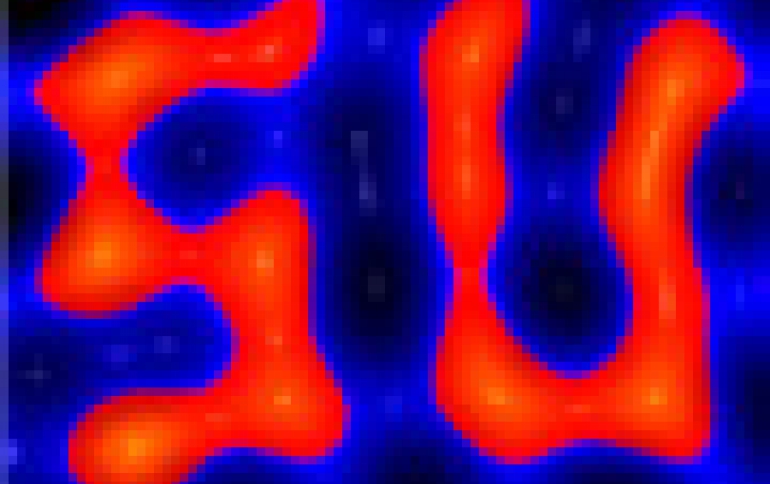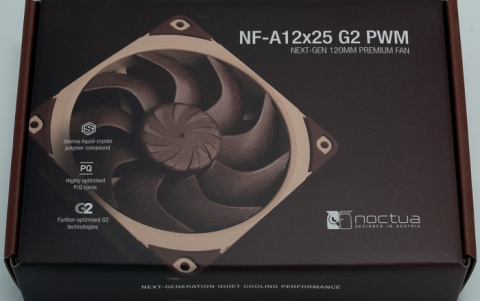
Scientists Store Information in Extreme Densities Using Quantum Holograms
Researchers at Stanford Univresity have set a new storage density record by storing information using a holographic method that is based on electron wavefunctions.
In a paper published online Sunday in the journal Nature Nanotechnology ("Quantum holographic encoding in a two-dimensional electron gas"), the Stanford researchers describe how they have created letters assembled from subatomic sized bits as small as 0.3 nanometers.
The researchers used a scanning tunnelling microscope, a device that not only sees objects at a very small scale but also can be used to move around individual atoms. Until now, the ability of the scanning tunnelling microscope to manipulate single atoms and molecules has allowed a single bit of information to be represented by a single atom or molecule. Although such information densities remain far beyond the reach of real-world devices, it has been assumed that the finite spacing between atoms in condensed-matter systems sets a rigid upper limit on information density.
But Chris Moon, Hari Manoharan and Laila Mattos, three researchers who worked on Standford's subatomic writing project, showed that it is possible to exceed this limit with a holographic method that is based on electron wavefunctions rather than free-space optical waves.
The Stanford team used a a scanning tunneling microscope to drag single carbon monoxide molecules into a desired pattern on a copper chip the size of a fingernail.
On the two-dimensional surface of the copper, electrons zip around, behaving as both particles and waves, bouncing off the carbon monoxide molecules the way ripples in a shallow pond might interact with stones placed in the water. The ever-moving waves interact with the molecules and with each other to form standing "interference patterns" that vary with the placement of the molecules.
By altering the arrangement of the molecules, the researchers can create different waveforms, effectively encoding information for later retrieval. To encode and read out the data at unprecedented density, the scientists have devised a new technology, Electronic Quantum Holography.
In a traditional hologram, laser light is shined on a two-dimensional image and a ghostly 3-D object appears. In the new holography, the two-dimensional "molecular holograms" are illuminated not by laser light but by the electrons that are already in the copper in great abundance. The resulting "electronic object" can be read with the scanning tunneling microscope.
Several images can be stored in the same hologram, each created at a different electron wavelength. The researchers read them separately, like stacked pages of a book. The experience, Moon said, is roughly analogous to an optical hologram that shows one object when illuminated with red light and a different object in green light.
So the true significance of the work lies in storing more information in less space. Scanning tunnelling microscopy and holograms comprised of individually manipulated molecules are used to create and detect electronically projected objects with features as small as 0.3 nm, and to achieve information densities in excess of 20 bits nm-2.
Although such information densities remain far beyond the reach of real-world devices, the researchers proved that the finite spacing between atoms in condensed-matter systems do not set a rigid upper limit on information density.
The researchers used a scanning tunnelling microscope, a device that not only sees objects at a very small scale but also can be used to move around individual atoms. Until now, the ability of the scanning tunnelling microscope to manipulate single atoms and molecules has allowed a single bit of information to be represented by a single atom or molecule. Although such information densities remain far beyond the reach of real-world devices, it has been assumed that the finite spacing between atoms in condensed-matter systems sets a rigid upper limit on information density.
But Chris Moon, Hari Manoharan and Laila Mattos, three researchers who worked on Standford's subatomic writing project, showed that it is possible to exceed this limit with a holographic method that is based on electron wavefunctions rather than free-space optical waves.
The Stanford team used a a scanning tunneling microscope to drag single carbon monoxide molecules into a desired pattern on a copper chip the size of a fingernail.
On the two-dimensional surface of the copper, electrons zip around, behaving as both particles and waves, bouncing off the carbon monoxide molecules the way ripples in a shallow pond might interact with stones placed in the water. The ever-moving waves interact with the molecules and with each other to form standing "interference patterns" that vary with the placement of the molecules.
By altering the arrangement of the molecules, the researchers can create different waveforms, effectively encoding information for later retrieval. To encode and read out the data at unprecedented density, the scientists have devised a new technology, Electronic Quantum Holography.
In a traditional hologram, laser light is shined on a two-dimensional image and a ghostly 3-D object appears. In the new holography, the two-dimensional "molecular holograms" are illuminated not by laser light but by the electrons that are already in the copper in great abundance. The resulting "electronic object" can be read with the scanning tunneling microscope.
Several images can be stored in the same hologram, each created at a different electron wavelength. The researchers read them separately, like stacked pages of a book. The experience, Moon said, is roughly analogous to an optical hologram that shows one object when illuminated with red light and a different object in green light.
So the true significance of the work lies in storing more information in less space. Scanning tunnelling microscopy and holograms comprised of individually manipulated molecules are used to create and detect electronically projected objects with features as small as 0.3 nm, and to achieve information densities in excess of 20 bits nm-2.
Although such information densities remain far beyond the reach of real-world devices, the researchers proved that the finite spacing between atoms in condensed-matter systems do not set a rigid upper limit on information density.













